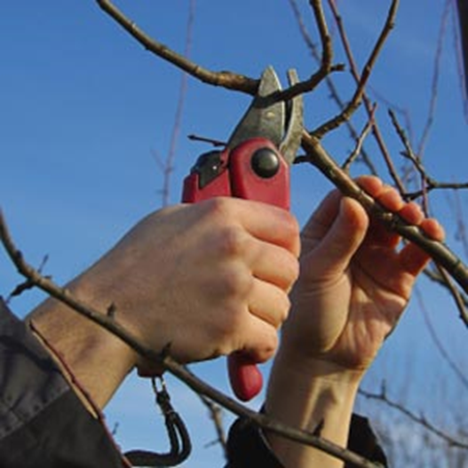February Gardening Tips
go.ncsu.edu/readext?766842
en Español / em Português
El inglés es el idioma de control de esta página. En la medida en que haya algún conflicto entre la traducción al inglés y la traducción, el inglés prevalece.
Al hacer clic en el enlace de traducción se activa un servicio de traducción gratuito para convertir la página al español. Al igual que con cualquier traducción por Internet, la conversión no es sensible al contexto y puede que no traduzca el texto en su significado original. NC State Extension no garantiza la exactitud del texto traducido. Por favor, tenga en cuenta que algunas aplicaciones y/o servicios pueden no funcionar como se espera cuando se traducen.
Português
Inglês é o idioma de controle desta página. Na medida que haja algum conflito entre o texto original em Inglês e a tradução, o Inglês prevalece.
Ao clicar no link de tradução, um serviço gratuito de tradução será ativado para converter a página para o Português. Como em qualquer tradução pela internet, a conversão não é sensivel ao contexto e pode não ocorrer a tradução para o significado orginal. O serviço de Extensão da Carolina do Norte (NC State Extension) não garante a exatidão do texto traduzido. Por favor, observe que algumas funções ou serviços podem não funcionar como esperado após a tradução.
English
English is the controlling language of this page. To the extent there is any conflict between the English text and the translation, English controls.
Clicking on the translation link activates a free translation service to convert the page to Spanish. As with any Internet translation, the conversion is not context-sensitive and may not translate the text to its original meaning. NC State Extension does not guarantee the accuracy of the translated text. Please note that some applications and/or services may not function as expected when translated.
Collapse ▲During the winter season we gardeners usually do not spend much time outside in our gardens. However, it won’t be long before warmer days arrive so use some time in February to prepare for spring!
Lawn
- Do not apply “weed and feed” products. These contain both fertilizer and weed killer, but it is too early to fertilize warm season lawns such as Centipede, Bermuda, Zoysia and St. Augustine grass.
- Late February is the best time to get out early applications of preemergence herbicides for crabgrass (aka crabgrass preventer). Many products are granular allowing easier spread.
- Tune up your lawn mowers and other lawn equipment to be ready for spring by sharpening, replacing blades and changing oil.
- Annual winter weeds like henbit, chickweed, and lawn burweed are common in the lawn during this time. To control these weeds, a post-emergent broadleaf herbicide with 2-4D can be used. Apply herbicides on a warm day in order to be more effective. Centipede grass is sensitive to 2-4D so apply at a lower rate. Before using any herbicide, read the product label and apply according to the label directions and follow good safety practices.
Trees, Shrubs and Flowers
- Late February is the time to be pruning crape myrtles and other summer blooming shrubs (butterfly bush, lantana, gardenia, nandina, abelia, roses) as these plants produce flowers on the new growth that occurs in the spring.

Mid- to late February is the time for pruning fruiting plants, shade trees, and summer-blooming shrubs.
- Now is the time to buy your summer and fall flowering bulbs, such as dahlias, gladioli, cannas, caladiums, and lilies. Don’t plant them yet but wait for warmer weather (the soil temperature must be at least 55 degrees F).
- Rose pruning should be done as leaf buds begin to swell, usually late February into early March. Prune shrub roses (knock-out roses) back to 3 to 5 finger sized canes 18 to 24 inches long.
- Do not trim hydrangeas. Their stems may look dead but they contain this spring’s flower buds.
- February is a good time to cut back ornamental grasses. For shorter grasses cut to 4 to 6 inches in height. For pampas grass cut to a 6 to 12 inch height. Avoid cutting any new growth. Remember to wear gloves when cutting pampas and you can pull back the top with a rope to allow for easier cutting.
- Interested in propagating some plants. Now is the time to take hardwood cuttings from shrubs. Crape myrtles, viburnum and figs are very easy to root this way.
Fruit, Vegetables and Herbs
- Start growing your own salad garden! Direct sow loose leaf lettuce, arugula, spinach, mesclun mixes, carrots and radish in late February.
- By late February, start pepper, tomato, and eggplant seeds indoors to have transplants ready in mid-April. These crops need direct light and warm temperatures above 60°.
- Onion sets can be planted in the garden in February for harvest in May and June. Bee sure to plant short day varieties such as Candy, Granex (white), Stockton Sweet Red, Texas Early Grano and Yellow Granex.
- Plant seed potatoes in the garden for harvest in late May-early June.
- Prune fruiting plants such as grapevines, blueberries, and fruit trees.
- Spray your tree fruits this month with a dormant oil to control mites and scale. The oil simply covers the tree and suffocates the insects. (Note- do not apply dormant oil when the tree is not dormant. Doing so in the spring, summer, and fall will cause damage.)
- Direct sow other cool season vegetables such as beet, rutabagas, swiss chard, kale, mustard and turnip seed. Broccoli plants can also be set out during this time.
Jessica Strickland is an Agriculture Extension Agent, specializing in horticulture for North Carolina Cooperative Extension in Wayne County.
Learn More!
- Sign up for the Wayne County Extension Gardening email list to receive timely gardening tips.
- Follow us on Facebook and Instagram.
- Visit the North Carolina Extension Gardener Plant Toolbox to discover more plant ideas for your landscape




